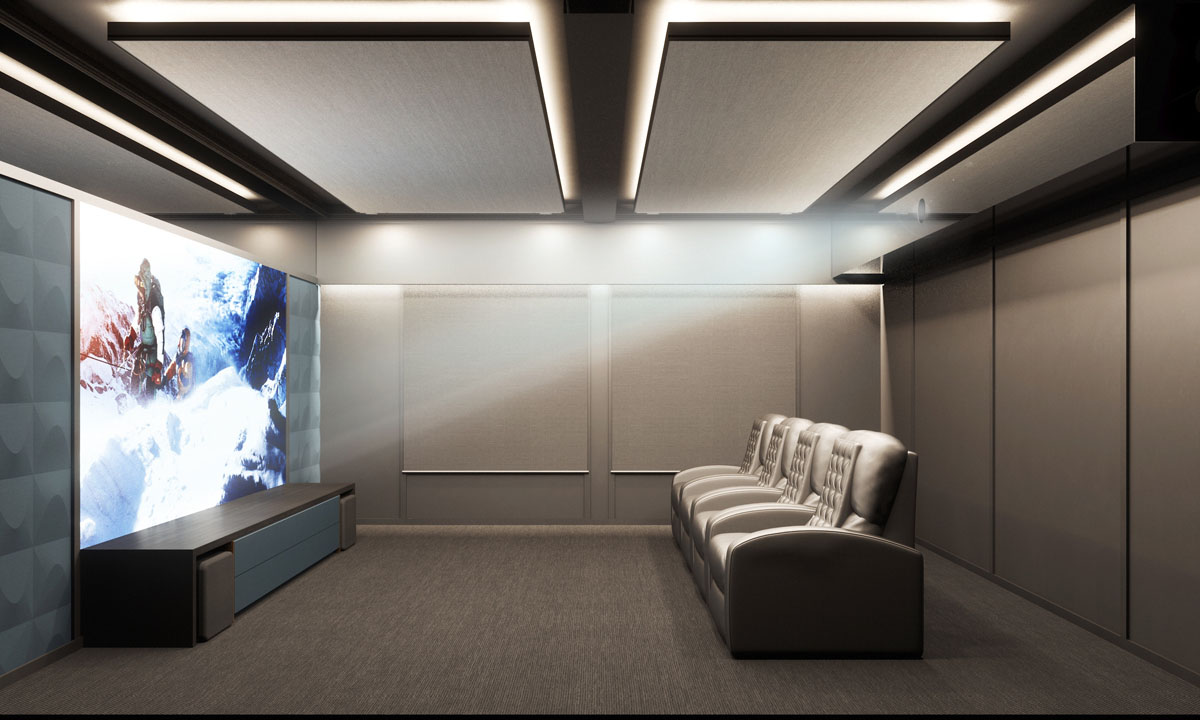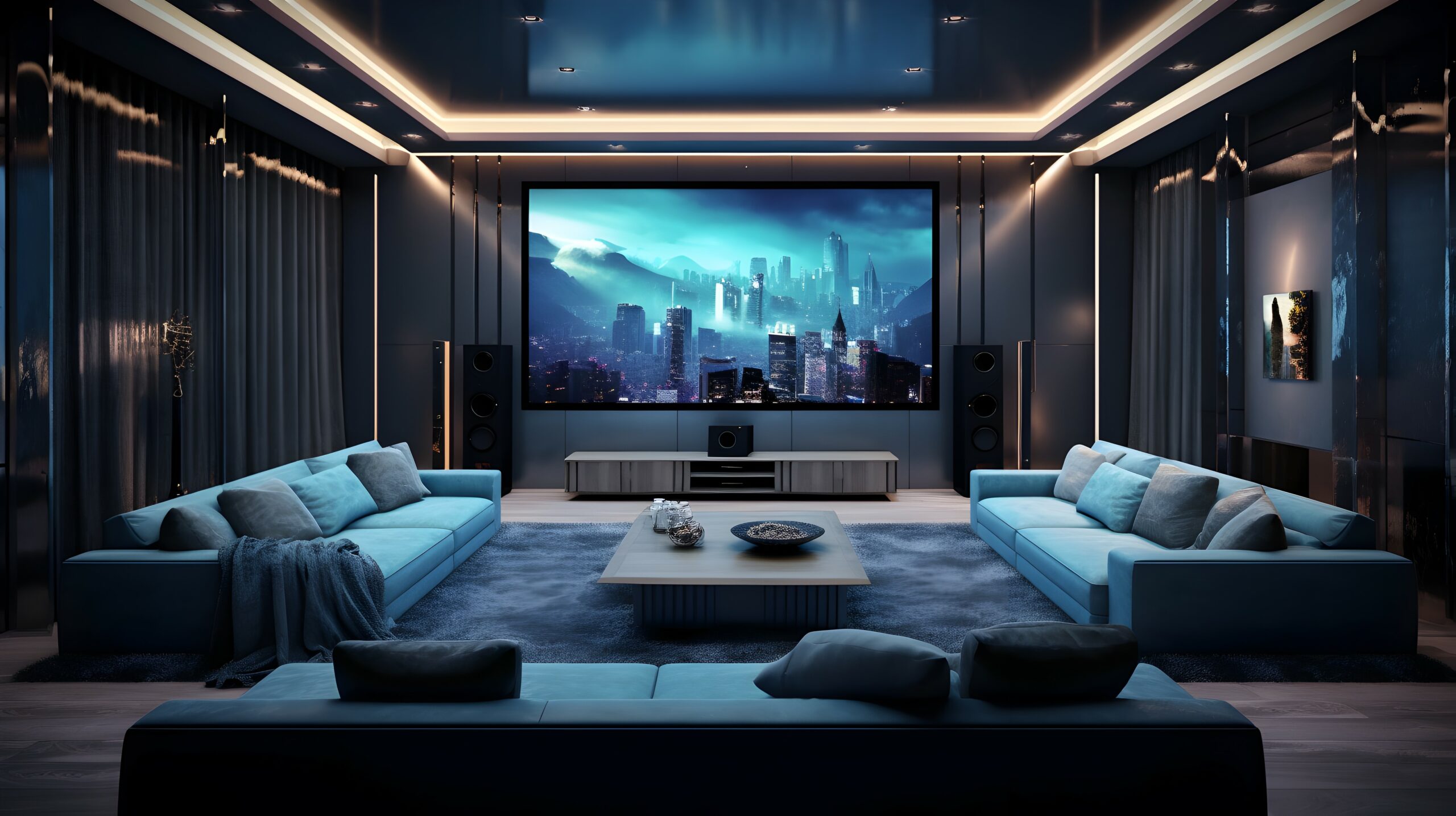Why Tampa Home Theater Installation Is a Revolutionary for Your Entertainment
Why Tampa Home Theater Installation Is a Revolutionary for Your Entertainment
Blog Article
Home Theater 101: Whatever You Required to Know for a Motion Picture Experience at Home
Producing a home theater that matches the cinematic experience of an industrial theater involves cautious consideration of multiple elements, including display selection, audio systems, and room format. Whether you are pondering the ideal screen dimension or the intricacies of border audio, recognizing these basics is necessary.
Picking the Right Screen
When establishing a home theater, picking the best screen can make or damage the checking out experience - tampa home theater installation. The screen functions as the centerpiece of your arrangement, influencing picture high quality, viewing angles, and total aesthetic. Key aspects to consider include screen type, resolution, and dimension
Initially, identify the ideal screen size based on your room measurements and seating range. Next off, select in between various screen kinds, such as fixed-frame, motorized, or retractable screens, each offering distinctive benefits.
Resolution is an additional essential aspect. For a truly immersive experience, think about a screen designed for 4K or perhaps 8K web content, making sure sharpness and quality. Additionally, take into consideration the screen's gain, which impacts illumination and contrast; a greater gain can enhance illumination in well-lit spaces, while a lower gain might be more appropriate for darker settings.
Choosing Sound Equipment
Audio tools is a crucial element of any home theater system, dramatically improving the total viewing experience. The choice of audio gear can identify the deepness, clearness, and immersion of audio, critical for creating a motion picture atmosphere.
When choosing audio tools, consider a border audio system, which generally includes a receiver, several audio speakers, and a speaker. A 5.1 or 7.1 network system is advised, where the initial number stands for the speakers and the second the speaker, giving an immersive soundscape. The receiver is the heart of the system, managing sound and video clip signals, and must support contemporary formats like Dolby Atmos for a boosted spatial experience.
Quality audio speakers are necessary; try to find designs that offer a well balanced audio profile with good bass action. Floor-standing audio speakers can generate richer noise, while bookshelf alternatives save space. In addition, think about wireless alternatives for simplicity of installation, although wired systems usually provide exceptional efficiency.

Ideal Seating Arrangements
Creating a perfect home theater experience pivots significantly on optimum seating setups. The setup of seats plays an important function in both comfort and viewing quality, straight impacting the overall cinematic experience.
First, take into consideration the screen size and viewing distance. An usual standard is to place seats at a range around 1.5 to 2.5 times the diagonal dimension of the display. This guarantees an immersive experience without straining the eyes.
Following, elevation is essential. The back rows need to be higher than the front to stay clear of blockages if your seating is in a tiered layout. For flat seats, make sure that the front row is not too close to the screen, and that everyone has a clear view.
Furthermore, consider the plan in terms of social characteristics. Team seats can improve the public experience, while specific seats may be preferred for individual viewing.

Lastly, prioritize convenience with ergonomic seating that supports prolonged watching durations. Integrating reclining chairs or cushioned seats can substantially improve the experience, making the home cinema a preferred destination for both amusement and leisure.
Lighting and Atmosphere
Reliable lights and atmosphere are crucial parts of a well-designed home movie theater, as they considerably affect the checking out experience. The right lights can improve the cinematic feeling, while bad choices can diminish it. For optimal results, take into consideration a layered lighting approach that consists of ambient, job, and accent illumination.
Ambient illumination gives basic illumination, making sure that the area is not completely dark, which can stress the eyes. Dimmer buttons are very recommended, permitting changes based upon the web content being watched. Task illumination, such as wall sconces or flooring lamps, supplies functional lighting for tasks like analysis or browsing the area without disrupting the total atmosphere.
Accent lights can be made use of to highlight architectural functions or create focal points, including depth and rate of interest to the room. LED strip lights behind displays company website or along racks can provide a refined radiance that boosts the visual experience without overwhelming the visitor.

Wiring and Installation Tips
A well-planned circuitry arrangement is vital for attaining ideal efficiency in your home cinema system. Correct circuitry not just makes sure high-grade audio and video signals but also boosts the total visual of your room. Begin by mapping out your format, determining where each part will be put, including your screen, speakers, and receiver.
When selecting cable televisions, prioritize top notch, suitably gauged wiring to lower signal loss. HDMI cords should be utilized for video clip connections, while speaker wire ought to match the requirements of your speakers and amplifier. Choose in-wall rated cables to adhere to safety requirements and keep a tidy look.

Verdict
In recap, producing an extraordinary home theater experience calls for careful consideration of various elements, consisting of screen selection, audio tools, seating arrangements, lights, and circuitry. By focusing on these factors, a cinematic environment can be effectively replicated, enabling for immersive checking out experiences that equal typical cinema settings.
Developing a home cinema that equals the cinematic experience of a business theater includes mindful consideration of multiple components, including screen option, audio systems, and space click to read layout.When establishing up a home movie theater, selecting the right screen can make or helpful resources break the seeing experience. Next off, choose in between various display kinds, such as fixed-frame, mechanized, or retractable displays, each offering distinctive benefits. For a really immersive experience, take into consideration a display made for 4K or even 8K web content, ensuring sharpness and clearness.In summary, creating a remarkable home theater experience requires mindful factor to consider of various components, including screen option, audio devices, seating setups, lighting, and circuitry.
Report this page